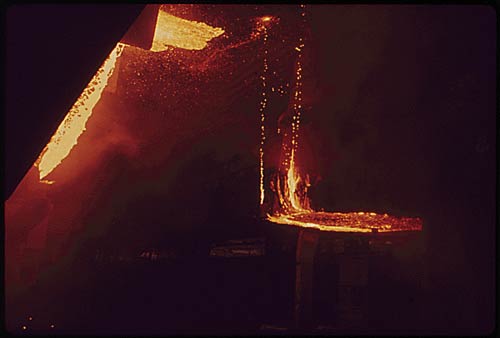Indians Develop New Iron Using Ancient Technology
By K.S. Jayaraman | Окт 30, 2007

Indian metallurgists have developed a type of corrosion-resistant iron that construction engineers would love. And vital clues for it came for Delhi’s famous Iron Pillar that has been standing tall for over 1,600 years.
Developed by Ramamurthy Balasubramaniam and his former student Gadadhar Sahoo of the Indian Institute of Technology (IIT) in Kanpur, the iron contains phosphorus and shows remarkable resistance to corrosion, especially in concrete.
‘This is a significant first step in the possible commercial (large-scale) use of these irons,’ Balasubramaniam, better known as Bala, told IANS.
Most steels today contain small amounts of carbon and manganese. Modern steel makers avoid phosphorus because its segregation to grain boundaries makes the steel brittle.
But the IIT team successfully produced ductile phosphoric irons by driving the phosphorus away from grain boundaries through clever alloy design and novel heat treatment.
Ironically, Bala’s material is not new. It was being made by Indian ironsmiths centuries ago. Bala says he got the clue for developing this material from the six-tonne seven-metre tall Delhi Iron Pillar – a major tourist attraction in the Qutb Minar complex — that has been standing for centuries in the harsh weather of the capital without any corrosion.
‘As a metallurgist, I was intrigued,’ Bala told IANS. And his passionate quest to unravel the mystery that began in 1990s has now culminated in phosphoric irons.
The test samples developed by the IIT team remained fresh after three months of being immersed in solution, simulating the corrosive concrete environment, whereas the best commercially available steels got rusted. In another experiment, they embedded the samples in concrete to simulate actual conditions and obtained similar results.
‘The work is especially important in regard to the widespread use of steels in civil structures,’ said Gerhard E. Welsch, professor of Materials Science and Engineering at Case Western Reserve University (Cleveland, Ohio).
‘The recent bridge collapse in Minneapolis has added new urgency,’ Welsch said in a congratulatory message to Bala. Seven people died when the bridge across the Mississippi river collapsed Aug 2, 2007.
Current philosophies to tackle corrosion in concrete include the addition of inhibitors to the cement mix, use of rebars that are galvanised, epoxy coated, or micro-alloyed by the addition of small amounts of chromium, copper and nickel — elements that are known to induce passivity in iron.
Their high cost is a disadvantage, says Bala. ‘Besides, we have experimentally shown our phosphoric irons perform better.’
Bala’s real break came when he found that the iron used in the Delhi pillar contained elevated amounts of phosphorus — as much as 0.25 percent against less than 0.05 percent in today’s iron. He found this was a result of the ancient process where iron ore is reduced in a single step by mixing it with charcoal, without any limestone addition.
Modern blast furnaces, on the other hand, use limestone yielding molten slag and pig iron (high in carbon) that is later converted into steel. Most phosphorus is carried away by the basic slag.
Further studies and analysing rust from the pillar showed that phosphorus catalysed the formation of a protective passive film on the surface of the pillar that acted as a barrier between the metal and rust.
Tanjore Anantharaman, author of the book ‘Delhi Iron Pillar – the Rustless Wonder’ and Bala’s former teacher at the Benaras Hindu University, says phosphorus was long suspected to be behind the pillar’s corrosion resistance. ‘It was Bala who proved it.’
That was in 2000. Actual material development and corrosion tests were initiated in 2003 when Sahoo joined Bala for his PhD that he completed in 2006.
‘Our papers based on the thesis are coming out now,’ Bala said. All the work, he said, was done with institute funds without any external support.
‘Certainly, we are not claiming that this is the end of our studies,’ admits Bala. ‘We have shown the usefulness of phosphoric irons for concrete reinforcement applications. Now it has to be taken up by more researchers for greater understanding.’
Bala thanks his forefathers for the success. ‘I am of the firm belief that ancient Indian metallurgists had the empirical knowledge that high phosphorus content ores resulted in corrosion-resistant iron. They did not create this material by accident.’















